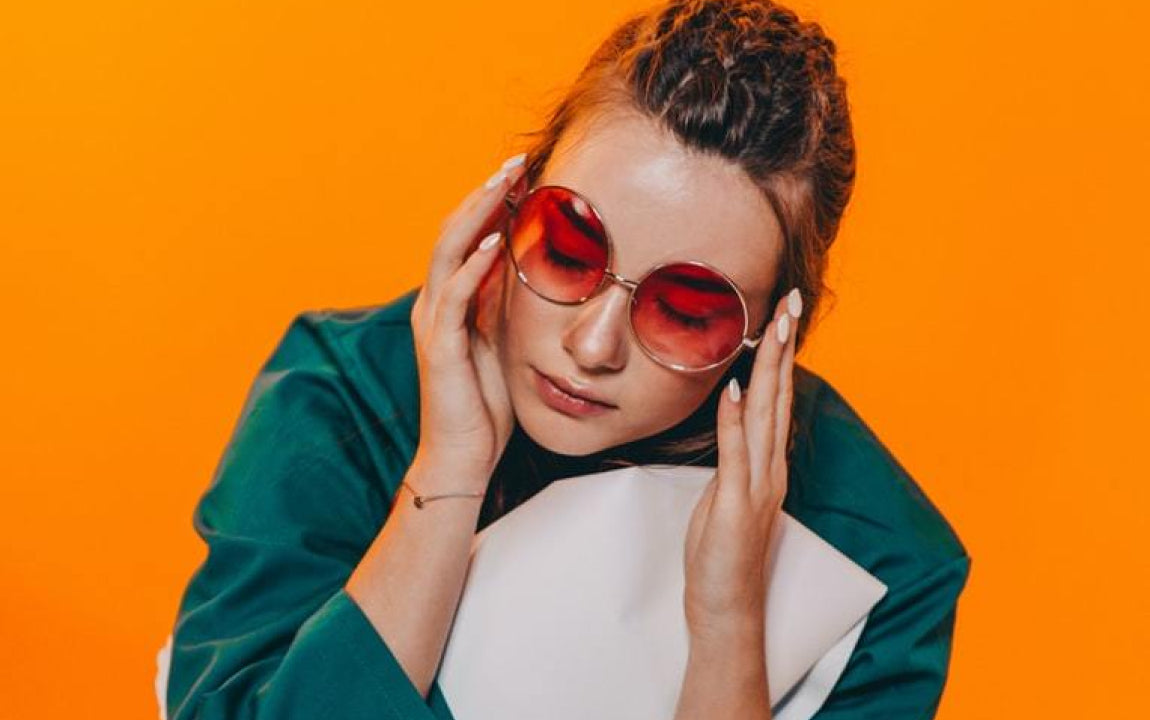Why Wear My Sunglasses at Night?

Why wear my sunglasses at night?
More people are sporting yellow-tinged glasses indoors. They’re not rock stars. Those “in the know” have discovered that some types of artificial light, specifically “cool” or “bright white” lamps, emit more UV radiation than others, which can be a cause of cataracts and age-related macular degeneration (AMD). This Australian study notes that the safe range of light appears to be between 2000 and 3500K, which is a warm-medium range. Despite being most energy efficient, many fluorescent lights fall outside this range, which “may increase UV-related eye disease up to 12%”. However, the jury is still out. Healthline.com notes that research has not confirmed that blue-light exposure causes eye damage or increased rates of AMD.
What is blue light?
You may have learned the acronym ROYGBIV in grade school, which is the range of visible light which includes colors red, orange, yellow, green, blue, indigo, violet. Red light is of much lower energy (due to longer wavelength) than blue and violet light, which are on the Ultra-Violet end due to shorter wavelength. Ultraviolet light is the most common damaging component of sunlight, hence we wear sunglasses and wear sunscreen. But because many of us spend up to 90% of our time indoors, we should consider if our indoor lighting needs the same precautions, because blue light in the range of 400nm -465 nm wavelength, can cause eye damage long-term. However, blue-turquoise light (tending more to the green) in the 470-500nm range, is actually good for us and helps our bodies to maintain their circadian rhythm.
Erring on the safe side, what kind of lights are safe for our eyes then?
- Incandescent bulbs: these take more energy, but if you stay in the “warm-medium range” of color, they will not give off blue light.
- Compact fluorescent bulbs do emit minimal amounts of UV light
- LED’s do not emit UV light, but they do emit lots of blue light and do not have the “near-infrared” spectrum that is used for healing purposes (sunlight has this). LED’s also have an imperceivable “flicker”, that is, switching on and off due to their digital nature.
This table, found in the Australian study, was adapted from Sizes.com. These “color temperature” numbers are found on lightbulb boxes, and correspond to a temperature in Kelvin, which is absolute temperature. There is a way to convert these K numbers to wavelength, to show what the peak wavelength is (however lower and higher wavelengths will be found there too). Wien’s Law tells us that the peak wavelength in nm (Lambda max) can be found if you divide 2,898,000 by the color temperature in K. Before I learned about the possible dangers in blue light, “Daylight” was my preferred lighting color (can’t go wrong with daylight, right?). However, with this new information, if I do the temperature / nm conversion, the peak wavelength of “Daylight” at 6300K color, is 460 nm. This is very close to the end of blue-turquoise light and the start of blue-violet light, so that much of the wavelengths of this color lamp fall in the dangerous range. I think I need to retrain my brain to like warmer colors!
Eye doctors have given some suggestions to help avoid possibly damaging blue and UV light and use more friendly ranges of light.
- Remove fluorescents from everyday spaces if possible (they work great for lesser-used spaces like an outdoor shed though).
- Replace fluorescents with incandescents or CFLs in the warm-medium color range.
- You can use light-blocking stickers to cover blue indicator lights. Consider replacing small appliances with blue digital readouts that are used often (like alarm clocks) with other shades of light.
- Replace small nightlight bulbs with red or gold bulbs.
- Consider using blue-blocking sunglasses if you have to do a lot of computer work, or place blue-light filters on your favorite electronic devices.
- Consider using blue-blocking sunglasses during the 2-3 hours before bedtime.
- Follow the 20-20-20 rule: after every 20 minutes of computer work, look up at a distance about 20 feet away for about 20 seconds. This will allow your eyes to refocus.
- Follow the 007 rule for legibility: try to keep character height 0.007 times or more viewing distance. Therefore if your screen is about 20” away, a 12 point font (about 0.14”) is approximately .007 times the distance (no wonder I like 12 point fonts!)
Here are some products that we found help reduce these UV light waves in the products we use everyday:
- Cristal Prevencia glasses are based on a roundtable discussion by nine eye doctors, which determined that the most damaging visible light is only found in a narrow band of blue-violet light. Thus, these glasses do not block all blue light (like yellow-tinged glasses), and let in blue-turquoise light, which is necessary for our vision and sleep cycle. You can buy these glasses through optometrists; scroll to the bottom of this page to see local outlets.
- Ocushield.com makes screen filters for your laptop, tablet, phones, and they also have blue-light blocking eyeglasses (clear type lens) and a small reading lamp.
- Lowbluelights.com have a similar array of products and their price for a computer screen/small TV was less. This website advocates wearing their glasses (yellow type lens) about 2 hours before bedtime, as the absence of blue light will trigger your body to make melatonin, preparing for a restful night’s sleep.






